
Did you know that there is a way to feel the history of Joseon more vividly in Jeonju Hanok Village, where history and tradition are kept alive and well? Every Saturday’s ‘Night Tour with the King’ at Gyeonggijeon Hall will take you to the middle of the Joseon Dynasty, where kings are still breathing. Walk through the night’s Gyeonggijeon Hall with vivid narrations from the actors who transform into six kings of Joseon, and take a look at the seven historically special places. You will be sure to have an unforgettable experience.
- Before Beginning Joseon Dynasty Tour
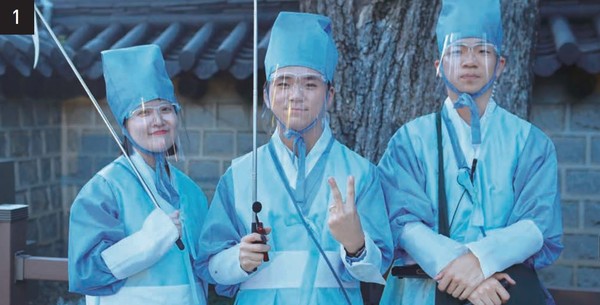
- Gyeonggijeon Hall is only open to visitors until 7 p.m. However, those who participate in the ‘Night Tour with the King’ can enter at night. Let’s make special memories in the night’s Gyeonggijeon Hall.
- Are you worried that the narration won’t be heard well? Don’t worry. You can experience the narration as vividly as if the actors are right beside you with the audio distributed to each person before entering.
- You can take pictures during the program unless you use the flash. Food and drinks are not available, and masks should be worn to prevent the spread of infectious diseases. Let’s mind our manners and enjoy the program together.
Now, follow us to experience the event along the guided path!
- 1. Hamabi (King Sejong)
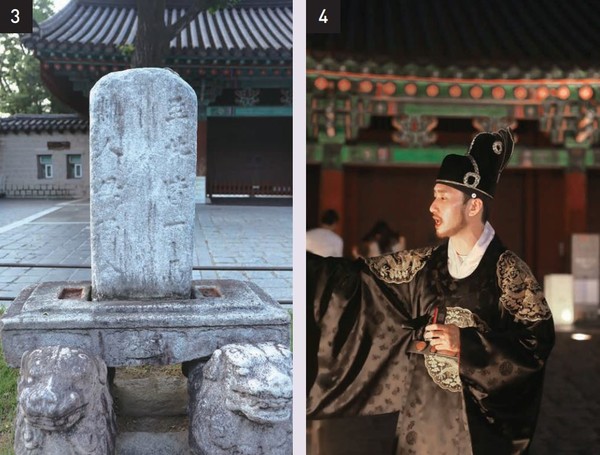
Hamabi, a stone monument built in front of the entrance to Gyeonggijeon Hall, is easy to miss unless you are paying attention. It is a monument installed in front of a shrine or palace gate to instruct every passerby to dismount their horse from here on out. The ‘Night Tour with the King’ begins at this spot. King Sejong, the fourth king of Joseon who created Hangul, and the face of the 10,000 won bill, waits for visitors in front of Hamabi. The door of Gyeonggijeon Hall opens as visitors enjoy the humorous narration of the actor who plays King Sejong, who explains the meaning of Hamabi and the ‘haetae’, an eastern mythical unicorn-lion sculpture, under the monument.
- 2. Hongsalmun (King Sejo)

The first thing you see when you go inside Gyeonggijeon Hall is Hongsalmun. Here, you can listen to the explanation about the entrance to Gyeonggijeon Hall from King Sejo, the seventh king of Joseon. Like the name suggests, Hongsalmun(the red arrow gate), is a gate with red pillars and has several red arrows on it. The red arrow was thought to be disliked by ghosts, so they were stuck on the gate to protect the sacred inner area where the king was enshrined.
- 3. Main Hall (King Taejong)
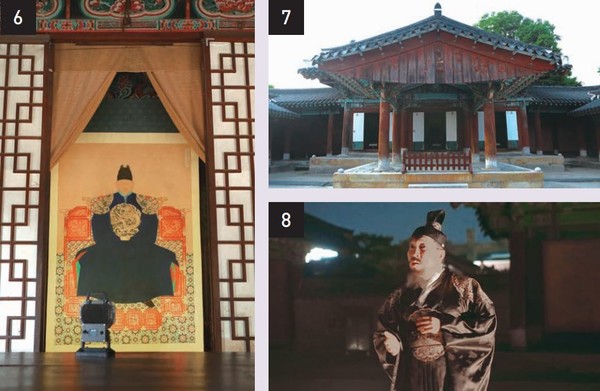
If you walk through the Hongsalmun, you will find the Main Hall, which is the highlight of Gyeonggijeon Hall. Located in the center of Gyeonggijeon Hall, the Main Hall is a space dedicated to enshrining the royal portrait of King Taejo, the first king of Joseon who founded the nation. Only the best painters of the time could paint the royal portrait, and it had to be painted as realistically as possible, such as even including a small wart above the king’s eye. What visitors to the Main Hall see is a copy of the original artwork. The original royal portrait is kept underground in the Royal Portrait Museum, and is opened to the public for only three weeks every November.
In the Main Hall, King Taejong, the fifth son of King Taejo and the third king of Joseon, awaits. Visitors can learn about the use of a cauldron-like bowl on the floor of the Main Hall, why there are turtle heads in the middle of the eaves, and the type of courtesy to display when climbing the Main Hall stairs
- 4. Jeonju History Archive (King Gwanghaegun)

If you exit the right door of the Main Hall, a different scene welcomes you. As you step outside and enjoy the scenery, you will see the Jeonju History Archive. In front of it, Gwanghaegun, the fifteenth king of Joseon, is waiting for you. The Jeonju History Archive was built in 1439 to store the annals of the Joseon Dynasty. It was printed in early Joseon and stored in the Seoul, Chungju, Seongju, and Jeonju archives. However, during the Japanese invasion of Korea in 1592, three archives except Jeonju were burned down by the Japanese army. Thanks to An Ui and Son Hong-rok who moved the annals to Naejangsan, which were later restored to the Jeonju History Archive, we can know the history of Joseon.
- 5. The Taesil and the Monument of King Yejong (King Jeongjo)
Next, through the bamboo forest you will find the Taesil and the Monument of King Yejong, where King Jeongjo, the twenty-second king of Joseon, is waiting to guide you. King Yejong was the eighth king of the Joseon Dynasty. In Joseon, when a child was born in the royal family, they kept the umbilical cord in a stone box, called ‘Teasil’, as a hope for the child’s health and longevity. However, the Taesil of King Yejong was never in this location. Originally, it was in Gui-myeon, Wanju-gun, in the Jeonbuk province. However, during the Japanese occupation, the Japanese governor-general of Korea stole the Taesil and abandoned it near present-day Gui elementary school. In 1970, it was enshrined inside Gyeonggijeon Hall.
- 6. Jogyeongmyo (King Taejo)
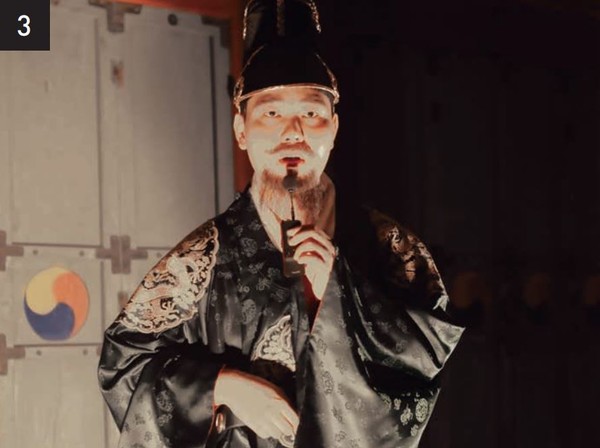
This is the final location before the end-of-tour concert, and here King Taejo will narrate for you. Jeonju is the original hometown of the Joseon dynasty. In other words, the place where the Joseon progenitor Lee Han was born. ‘Jogyeongmyo’ is a shrine dedicated to the family of Lee Han, progenitor of the Lee family, and to his wife Kim, whose name is derived from the Kyungju Kim family. Jogyeong is a priceless testament to the foundation of Joseon. It was built during the reign of King Yeongjo to honor his family despite opposition from many people, revealing that Josen’s beginnings are due to the actions of Lee Han. This shrine raised awareness about the royal family, granting them an air of sacredness.
- 7. Subokcheong House
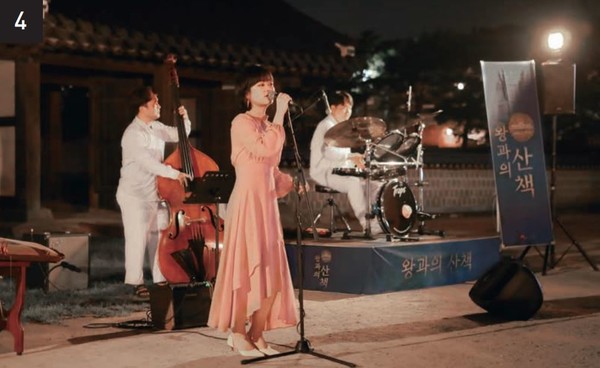
Subokcheong house is a temporary living space used in preparation for large events. The finale of 'Night Tour with a King'. is a performance at the Subokcheong House. Here at the Subokcheong House, a performance combining traditional Korean music and jazz by traditional performing arts groups will be held! Why don't you stop for a while and dive into a feast of Korean traditional music and jazz?
- Interview with Artistic Director Lee Wang-soo
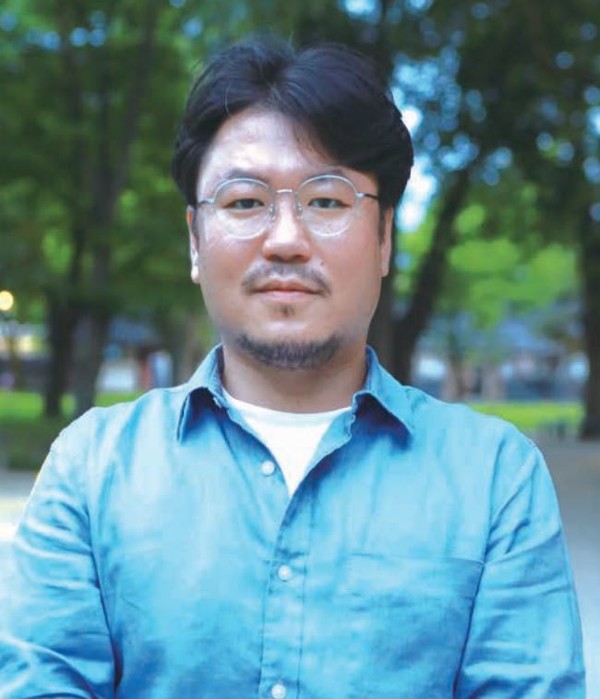
The JBNU Globe met Lee Wang-soo, artistic director of the Culture and Art Factory. He graduated from the Department of Korean Traditional Music at JBNU and directed ‘Night Tour with the King’.
- Gyeonggijeon Hall, Get Closer to People
Lee said, “The Cultural Heritage Administration focused on preserving and inheriting cultural properties, but at some point, it implemented a policy that focused on utilizing cultural properties so that these could become more engaging to the public. As part of the policy, ‘Jeonju Cultural Heritage Night Tour’ was established in 2016, and ‘Night Tour with the King’ was formed in 2018.”
- Multi-Talented Actors and Foreign Visitors
Lee continued, “Through these events, artists working in Jeonju can also be provided with opportunities for employment, so I try to ensure that these events continue.” Actors in Jeonju transform into the role of the kings of Joseon. Their acting creates a more realistic commentary. Some of them are able to have short conversations in English. Foreign visitors are given an English script that translates the actors' lines in advance, so they can participate in the event while looking at the script.
- Lee’s Perspective of Historical Values of Jeonju
He said, “There are two things that I think are the most important. First, I want to let people know that Jeonju is a region of rich cultural value as the original hometown of the Joseon Dynasty. Although Jeonju is famous as a tourist city, I think historical sites imbued with important cultural values, such as Hyanggyo and Choi Myeong-hee Literary Museum, are not well known. I have consistently tried to transform cultural properties into tangible reality so that the public thinks these are easy to understand and enjoyable in everyday life.” He added, “Second, in the Jeonju History Archive, the annals of the Joseon Dynasty were observed. This is a very important fact in history. During the night tour, the actor who plays the role of Gwanghaegun goes into more detail about the Jeonju History Archive.”
- Gyeonggijeon Hall as Relaxing Space for People
Lee hopes that people will think of this place as a park where they can comfortably come and relax. That's why he wrote ‘tour’ in the name of the event. The actors' commentary also includes words that can encourage visitors. He said, “I want more people to participate in the event to find the hidden charm of Jeonju, and to pause for a while in their busy lives to hear the kings’ warm words.”
|
The ‘Night Tour with the King’ is run every Saturday at 8 p.m. until October 22nd, 2022. One hundred visitors who pre-book will be divided into four groups to enter Gyeonggijeon Hall. From July 23rd to August 28th, the music performance at the Subokcheong House will be adjourned due to the hot weather. Please be aware of that! More information can be obtained from the social media page below. 
|
How did you feel while strolling inside Gyeonggijeon Hall? It is said that the kings of Joseon also walked through the quiet palaces to organize their thoughts when they were troubled. If you feel troubled and want to meditate on what’s nagging you, why don't you walk around here and organize your thoughts? As you walk, you may just clear your mind and find the answer you are seeking.
| Kim Eun-ji Editor-in-chief, Lee Da-yeon, Ha Yae-one Reporters

